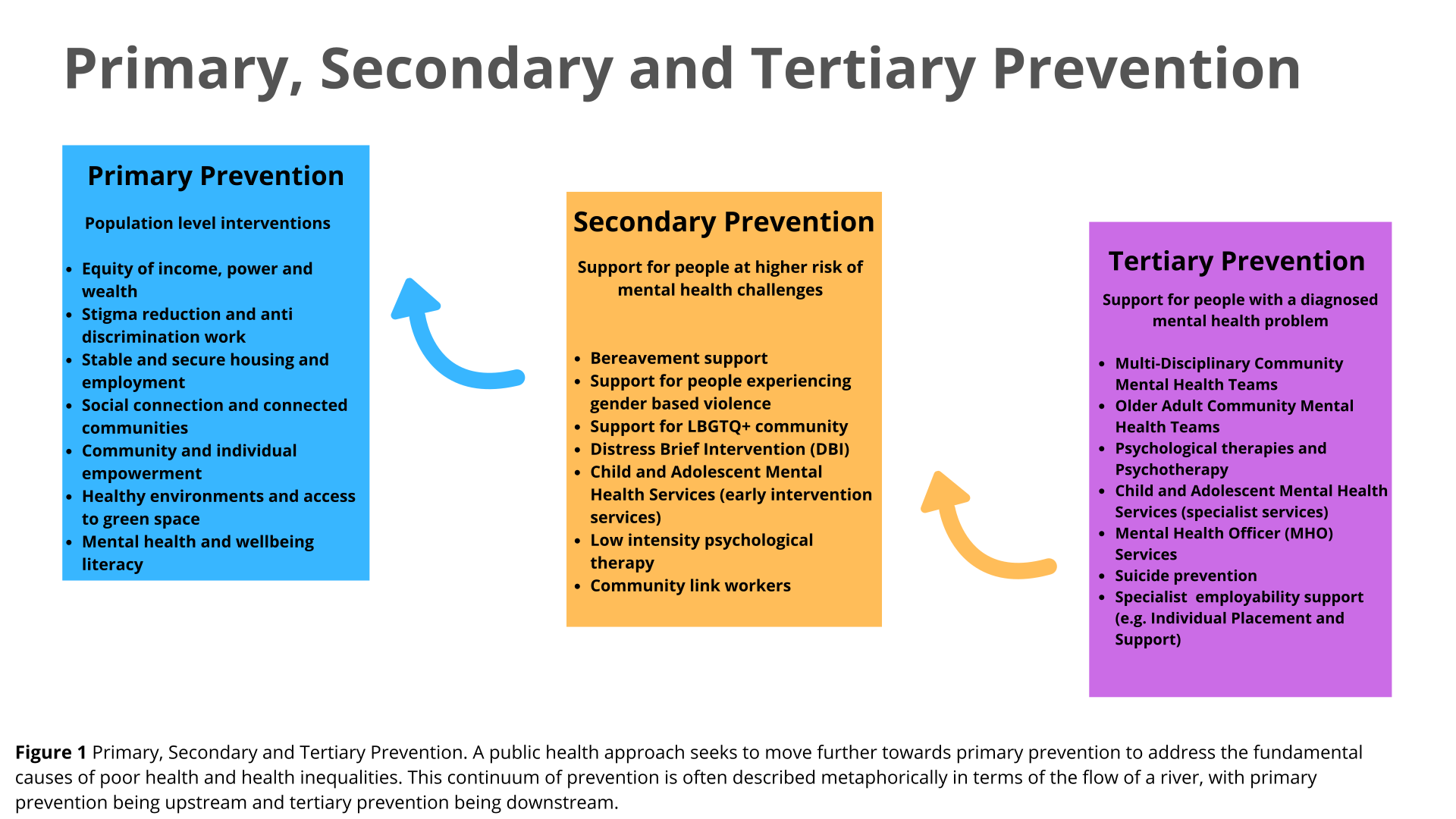A population mental health approach
Population health interventions are traditionally grouped into primary, secondary and tertiary prevention.
- Primary prevention aims to tackle fundamental causes; to reduce exposure to determinants of poor health and increase exposure to determinants of good mental health and wellbeing.
- Secondary prevention aims to mitigate the impact of negative outcomes which have already occurred or which we are currently unable to prevent occurring.
- Tertiary prevention aims to prevent further deterioration or negative impacts of ongoing health problems and includes living well with long term conditions.
Figure 1 (below), illustrates these three broad categories in terms of aims, objectives and interventions that might be implemented at each level for a population mental health and wellbeing programme of work. In reality, these are arbitrary categories in a continuum. Suicide prevention work, for example, can be further up or down this continuum depending on at what point in the pathway to suicide interventions are targeted. This could also be interpreted as a cycle, as those with lived experience who recover from mental ill-health move to primary prevention, aiming to maintain good mental health and wellbeing and build resilience. As the arrow indicates, a population mental health approach always aims to move further towards primary prevention, addressing the fundamental causes of poor health and health inequalities. However, all three levels of prevention are required to provide a holistic response to the population’s needs and strengths.
Secondary and tertiary prevention interventions must been seen in the context of those social, economic, environmental, physical and individual factors which primary prevention interventions seek to address. For example, enabling people to build psychological resilience to cope with or overcome life’s obstacles and stresses can be very beneficial but in some instances may simply help them to cope with preventable societal inequalities placed upon them. We need to challenge those inequalities at the same time, otherwise we risk promoting an acceptance of inequality and can even disempower people from challenging these structural inequalities.

